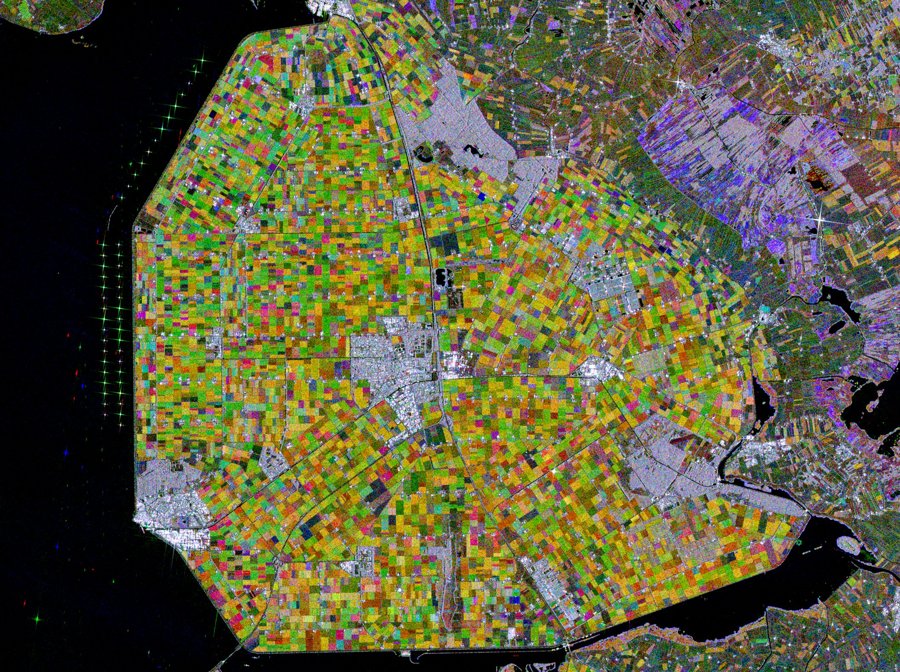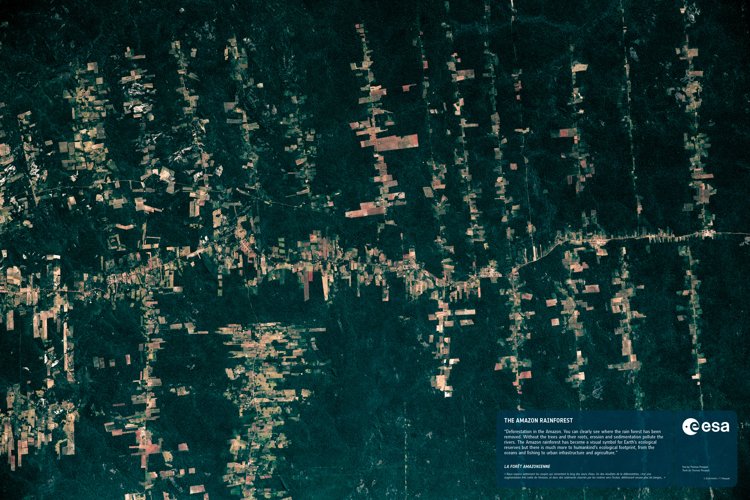‘Together we are building an ecosystem for innovations in remote sensing’
With the Partnerships for Space Instruments & Applications Preparatory Programme, the Netherlands is supporting technological breakthroughs and scientific cooperation in space research. The ‘Expertise Network Microwave Data for Vegetation Monitoring' aims to be able to monitor crops on earth in real time from space.
Dutch companies and knowledge institutions have been working for years on agricultural applications based on satellite data. Agriculture and space, they say, are a perfectly logical combination. Nevertheless, according to Delft professor Susan Steele-Dunne, coordinator of the Expertise Network Microwave Data for Vegetation Monitoring, there is still a lot to gain, both in the Netherlands and abroad: ‘Joining forces will give global visibility to the capabilities of the Netherlands. And in the world of remote sensing that is quite remarkable.
Microwave instruments in space can be used to map the structure and water content of vegetation on earth. This allows us to detect the health of plants and forests, how they are developing and how we can quickly identify deviations,' explains Steele-Dunne. In the Netherlands, TU Delft, Wageningen University, and the University of Twente are working on this technology. Companies like VanderSat, SarVision and NEO are offer products and services to the market. 'We are a small country with a lot of expertise that is often complementary. Within our Expertise Network, the focus is therefore on projects that none of us could do alone, but which we bring to a successful conclusion together.'

This image combines three Sentinel-1 radar acquisitions, taken with an approximately two months interval to detect changes in crop and soil status over time. Source: ESA
The Expertise Network only recently came into being. Plans for large meetings fell through due to the COVID-19 pandemic. Instead, smaller workshops were held online by various members. The central questions were: what do users of microwave data from space really need? What is the best they already can do with existing satellite data? And which instruments do space agencies need to develop in the future to really make a difference in the world?
Two objectives became immediately clear: monitoring from space would have to take place at the level of a few individual plants, i.e., with extremely high resolution. And the images would have to be available almost in real time. 'Wageningen works a lot with real-time processing and change detection. The University of Twente is focussing on modelling and classification. And TU Delft focuses more on the interaction of microwaves with vegetation. 'In a complementary way, we can use each other's research and results to move forward together,' says Steele-Dunne.
The technology that the Expertise Network is developing jointly enables new applications. Some examples: Most accurate maps for precision agriculture in the Netherlands. Vegetation monitoring worldwide to prevent the rain forest from being cut down for large-scale cultivation of crops such as cocoa, coffee beans and palm oil. Improved monitoring for farmers with a small plot of land in Africa, for example, even if those farmers grow different crops at the same time. And finally much more accurate data for insurance companies and the banking sector that work with the agricultural sector.'

Deforesting in the Amazon as seen from space. Source: Thomas Pesquet/ESA
'All these developments are connected,' explains Steele-Dunne. 'To recognize deforestation you need to be able to interpret images very quickly. But the same technique is needed for precision agriculture in the Netherlands. And if we can distinguish large agricultural parcels with one type of crop, then that is the beginning of a model that recognizes more complex situations in which everything grows together.’
In the short term, the parties in the Expertise Network are focusing on maximally exploiting already existing satellites and instruments. But they are also looking to the future: which instruments should ESA build in the future - with financial and technical support from the Netherlands?
According to Steele-Dunne, the Expertise Network has already proved its worth: ‘In the past, we often worked together in consortia consisting of a limited number of parties. Projects have a goal that must be achievable within five years or so, provided there is a budget to develop something together. Now we work very differently. An expertise network is a kind of ecosystem that you build together. A fundamental basis that will continue to exist in the future and that you can build on together.'